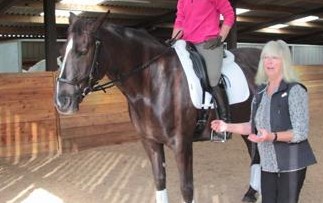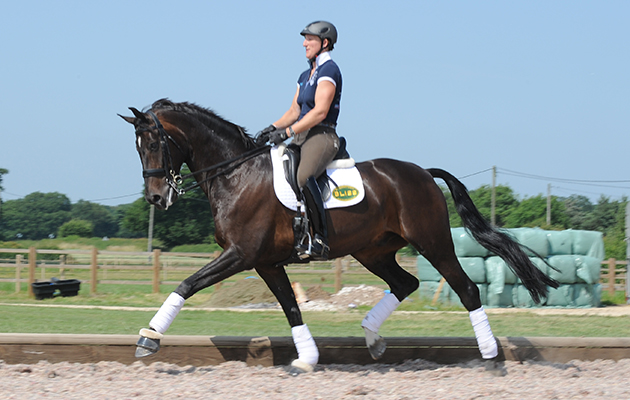Once you have a feeling that there is a good amount of energy and impulsion within an established canter with your horse, start to ride some differences within the pace.
Use a half-halt to bring the horse backwards slightly while ensuring that the impulsion doesn’t die. Then ride your horse forwards to make a nice difference to the canter. Repeat this exercise, forwards and backwards. You should notice a development within the canter towards some collection as the horse is achieving better balance with more weight being carried into the hind leg.
Always remember that before you bring the horse back, make sure he is in front of your leg. This will ensure that you have something to take back when asking for the collection.
Don’t ask for too much in one go – three to 10 strides, depending on how established your horse is will be sufficient.
The differences within the pace will help to engage the hind leg and aid activity within the canter which is extremely important for successful collection which will be required from your horse at higher level tests.
Another good exercise to help collection of the canter is to use small circles (approximately 10m in diameter if possible). These can help to develop the horse’s balance and allows you to challenge the energy of the canter without the horse becoming too onward bound. This also helps to ‘feed’ the hind leg with energy without the horse running and to encourage the horse to sit within the collection.
Repeat this exercise on both reins to check that your horse is even.
The third exercise you can try is to use a pole in the corner of the arena to use as a guideline to encourage riding into the corners. It must be easy to ride this exercise in walk before trying it in canter.
Ride in canter onto a square, riding forwards on the sides before collecting, using the pole to take you into the corner.






























